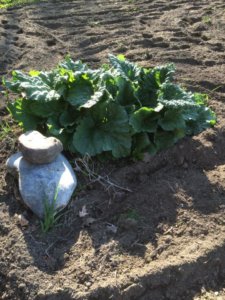It is another spring season at camp and it is beautiful! Our meadows are carpeted with an assortment of wild flowers and the woods hold floral secrets for the careful observer.
Consider the wild violet. Violets are the birth flower for those born in February. Here at camp, violets are certainly not showing their glories in that winter month, but we know that under the last of the winter’s snows, they are preparing to burst forth! There are 400 or 500 species of violets and they spread over meadows and Vermont yards over the earliest days of spring. Napoleon Bonaparte identified the violet as his signature flower. In fact, back in his day, a common question that would reflect a citizen’s loyalty to Bonaparte was “do you love violets”. The only appropriate answer from the loyal French person was, “Eh, bien”! You can figure out what that meant! Violets can be added to spring salads just for the fun of it, and for the health of it since they are high in Vitamin C. Too bad they do not last into the summer months so they could show up on the camp salad bar for us all to enjoy!
Just outside Lincoln cabin on the upper level, another early spring flower can be found. It is the red trillium, also known as “wake robin” because trillium bloom before robins have begun their nest building. At the pond, one can search out white trillium and if one is particularly observant, the bloom that is the mix of the two—white with a red center. Native Americans used the roots of the trillium for medicinal purposes and yes…their leaves can be eaten, too!
And then there’s the dandelion. By mid May, the archery field looks like a yellow quilt has been tossed over it. Did you know that dandelions are the only flower that represents all three constructs of our solar system? The yellow bloom represents the sun, the white ball of seeds could be seen as the moon, and each separate seed, as it begins its flight, can be seen as shooting stars. Up until the 1800s, would you believe that early American citizens would pull up the grass in their yards to make room for dandelions and other useful “weeds” . How times have changed! Edible? Oh, yes! Dandelion-green salad is a favorite spring treat for many here in Vermont. All it needs is a little maple syrup/mustard dressing!
Finally, there’s the very shy ladyslipper. A member of the orchard family, these rare blooms are plentiful on a short piece of Steve’s trail (that trail circumnavigates camp property without taking to a road). The Ojibwe people who lived in what is now New England, believed in a myth about ladyslippers. One deep snowy winter, the tribe experienced a terrible sickness. The only cure was an herb that a neighboring tribe had. A brave Indian girl risked her life traveling through deep snow and over a frozen lake to get the medicine her people required. On her way back, she fell exhausted in the deep snow. Eventually she was able to climb out of the snow, but not without losing her moccasins. She finally made it back to her village where the medicine she carried cured the sick. In the spring, she and her brother went back to find her moccasins. Although they never found them, they did notice that every where a drop of the girl’s blood fell from her cut feet, a lady slipper (a moccasin slipper) flower had grown.
It is a spring-time treat to walk around camp with an eye to the celebration of spring that flowers add to the environment. As you prepare to come to camp, there will be summer flowers to notice. Did you know that environmentalists claim that while Americans can identify over a hundred commercial logos, very few of us can identify as many as five plants with whom we live. By the end of the summer, you will be able to do just that! Maybe you can right now! If so, you are a star!
Can anyone guess this spring plant that grows in our own BC garden? Hint: It takes delicious!


